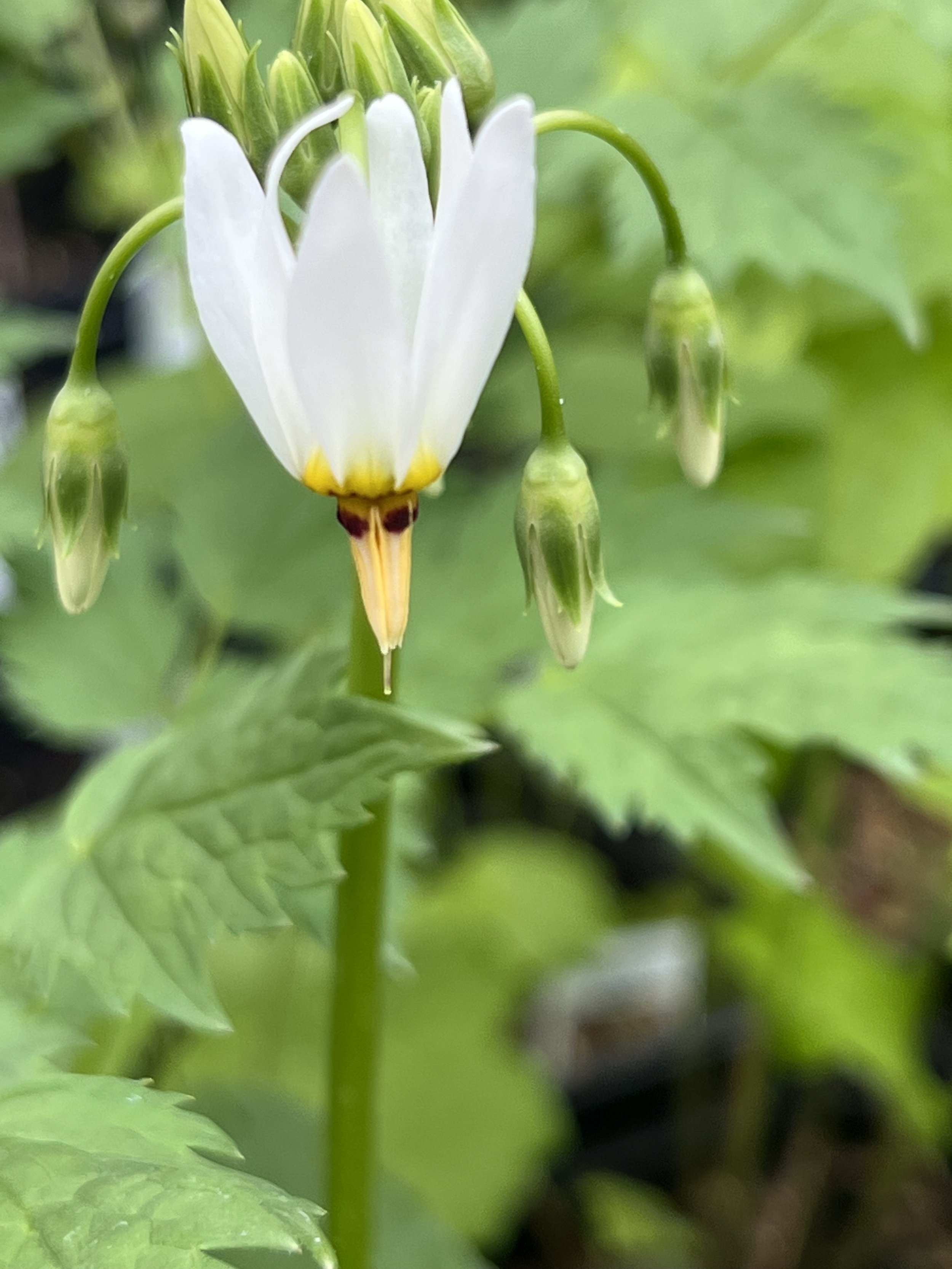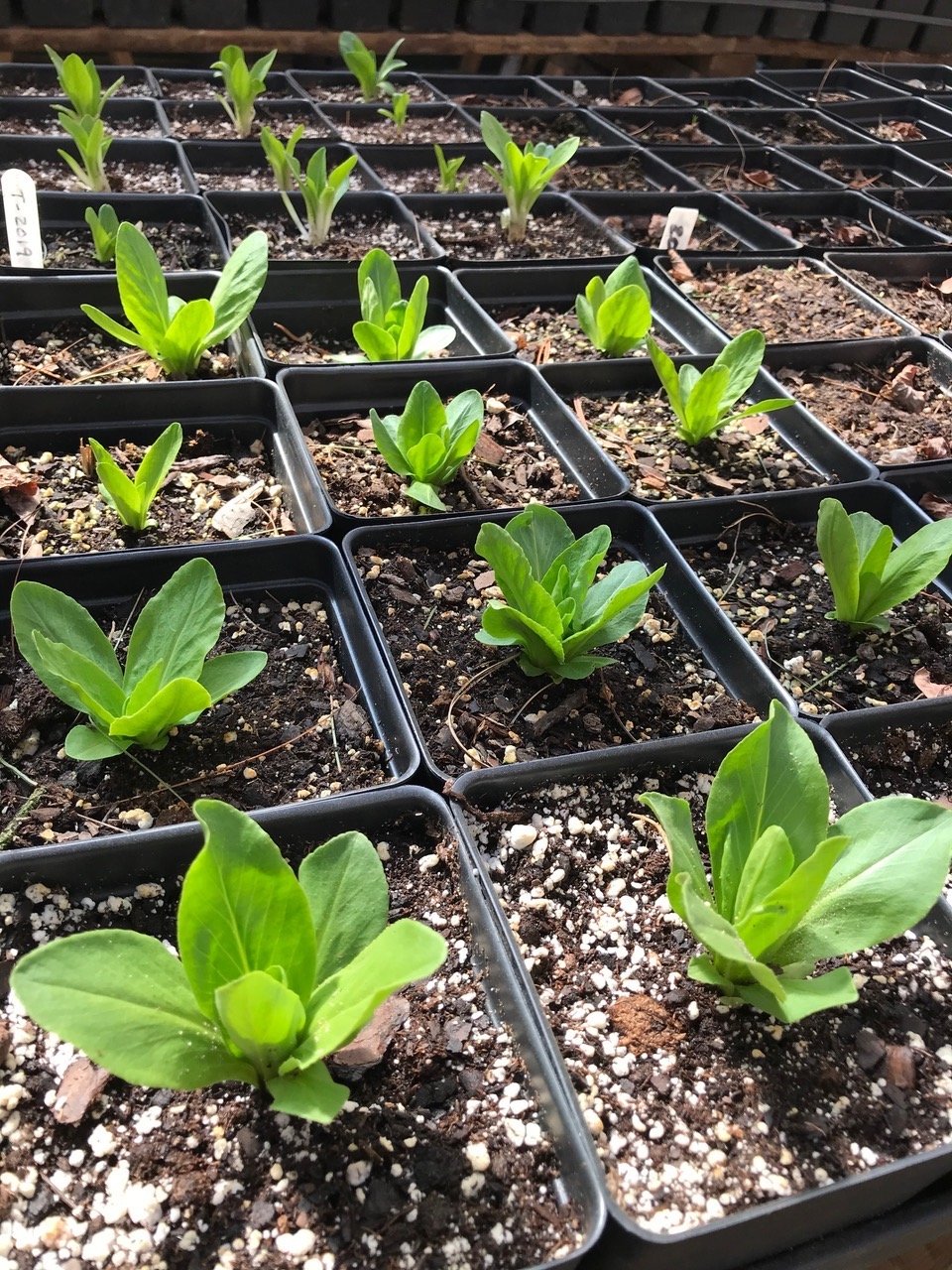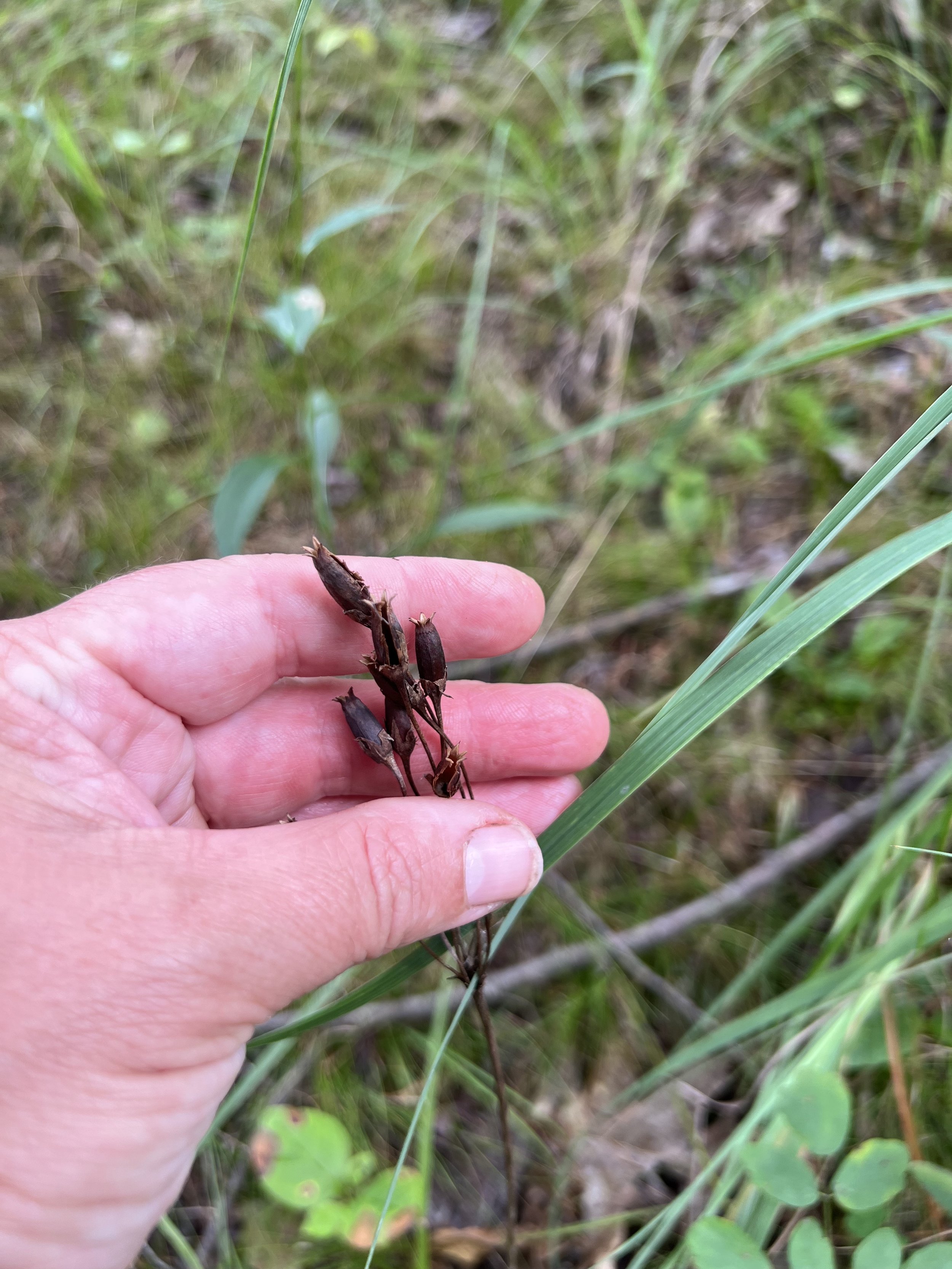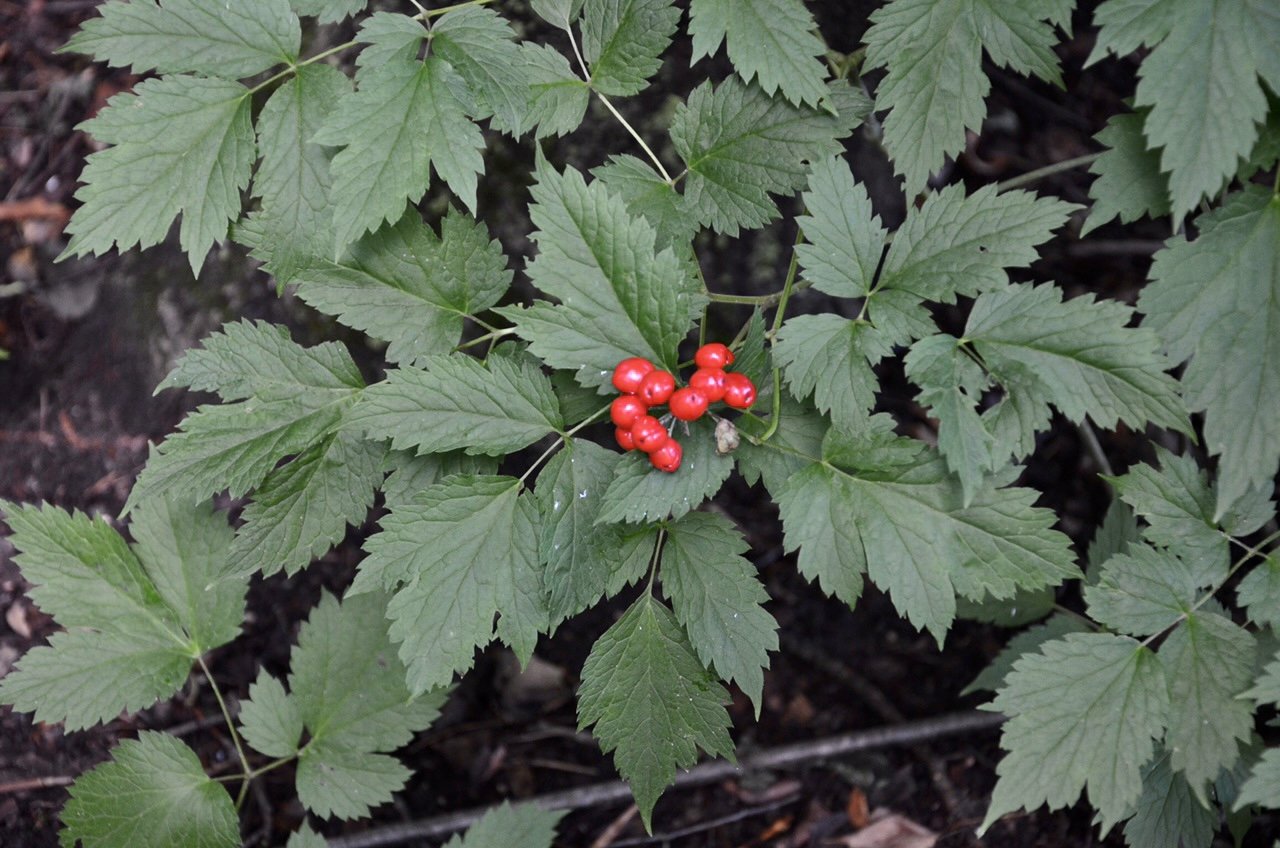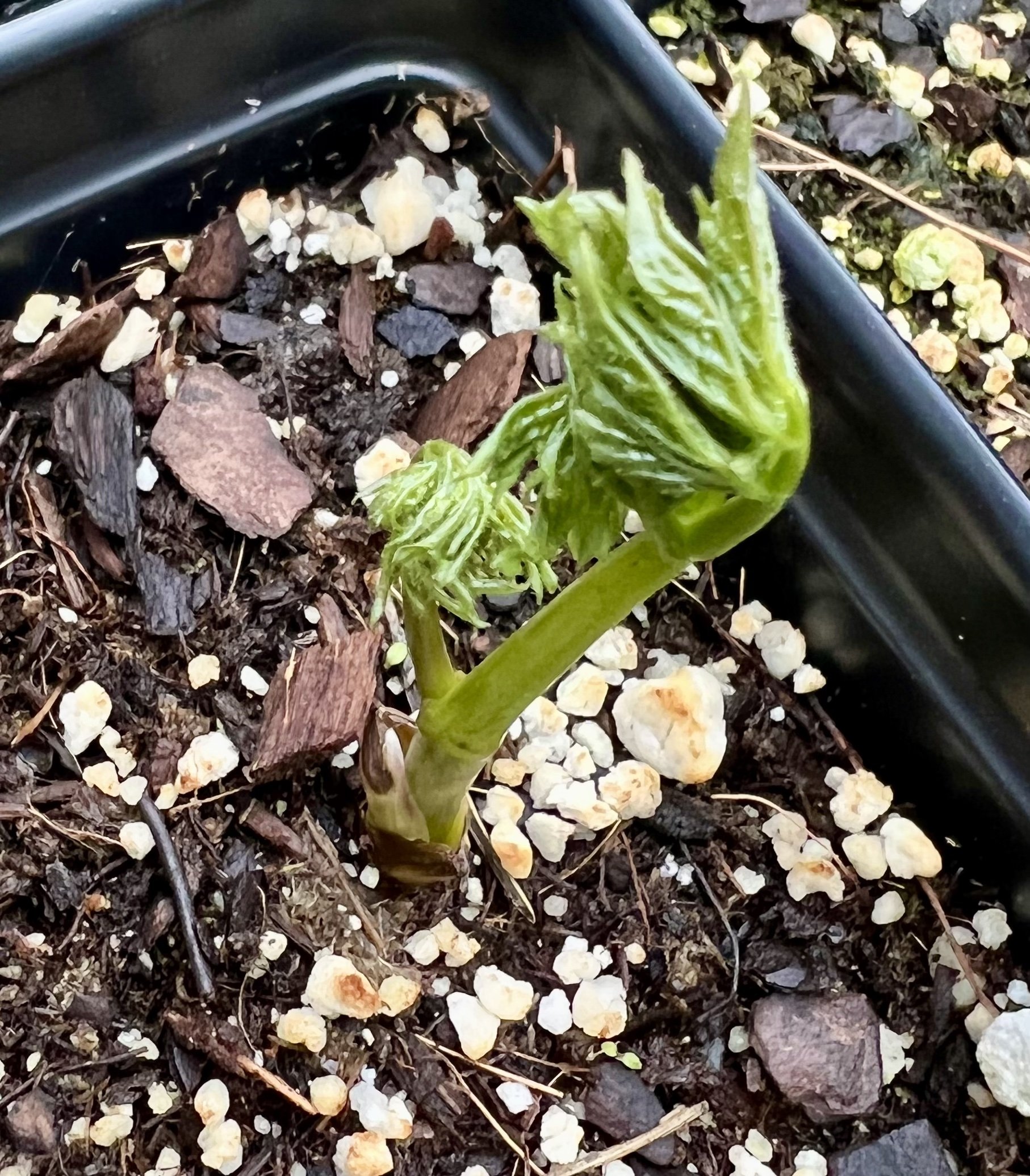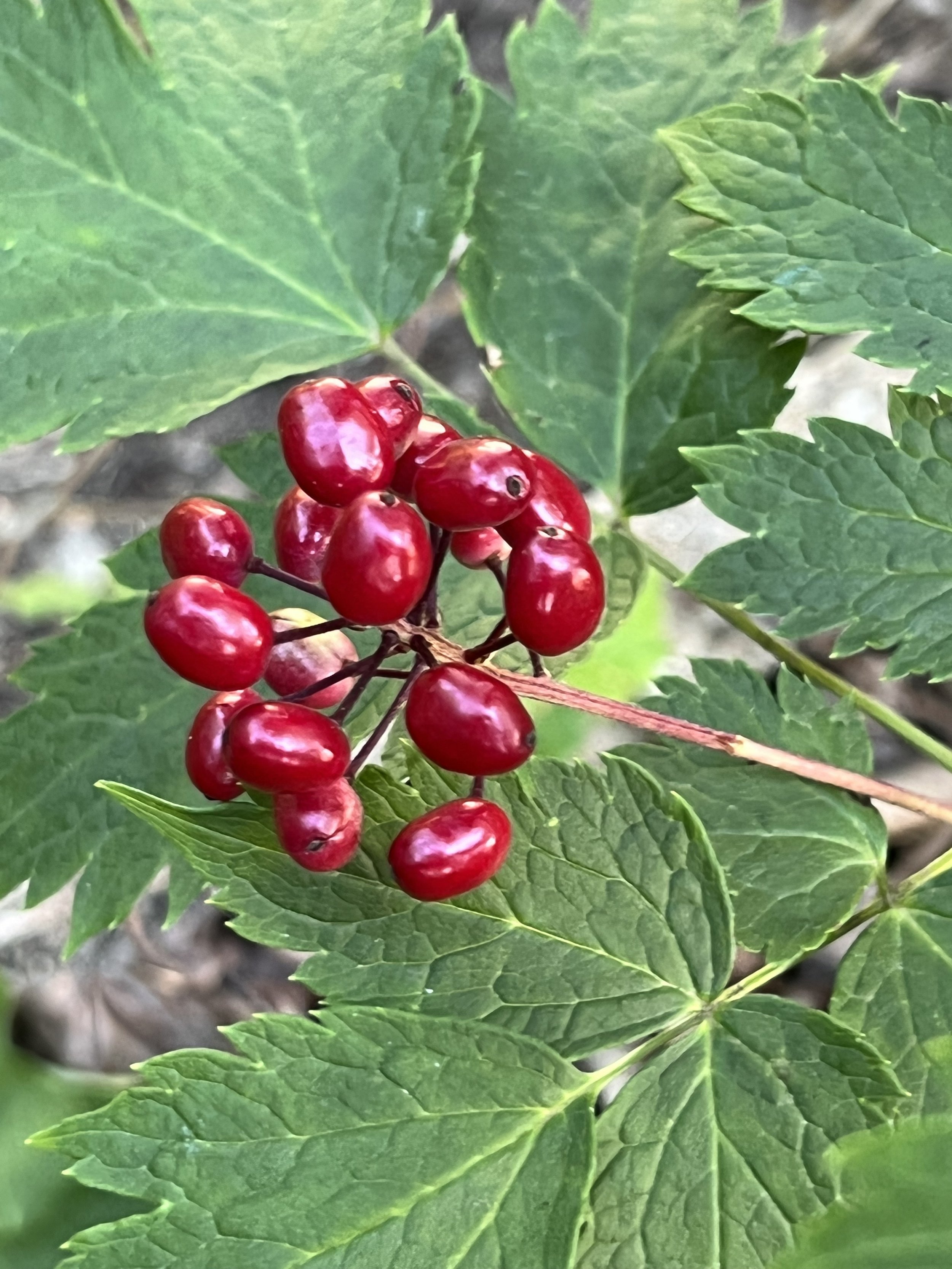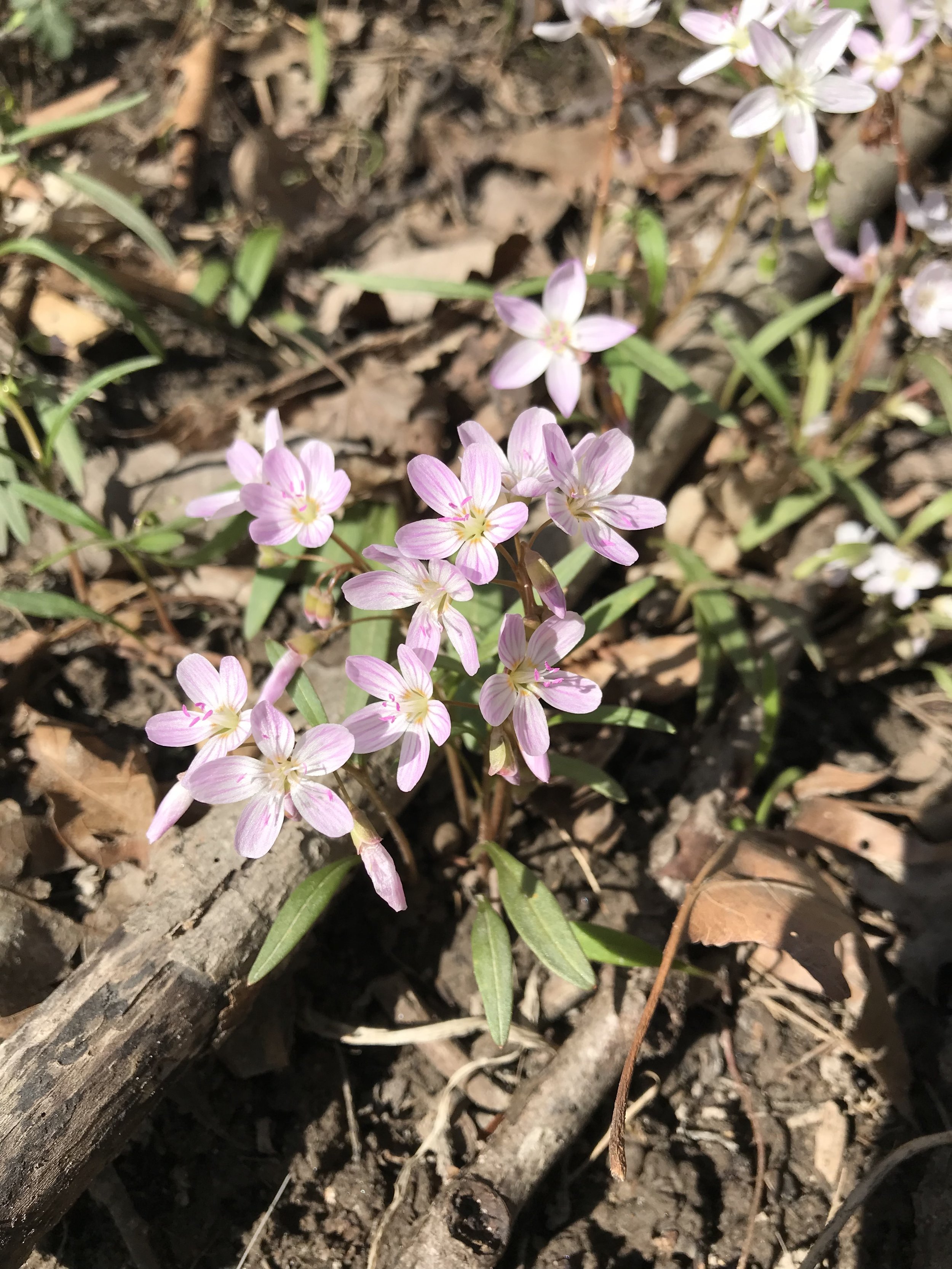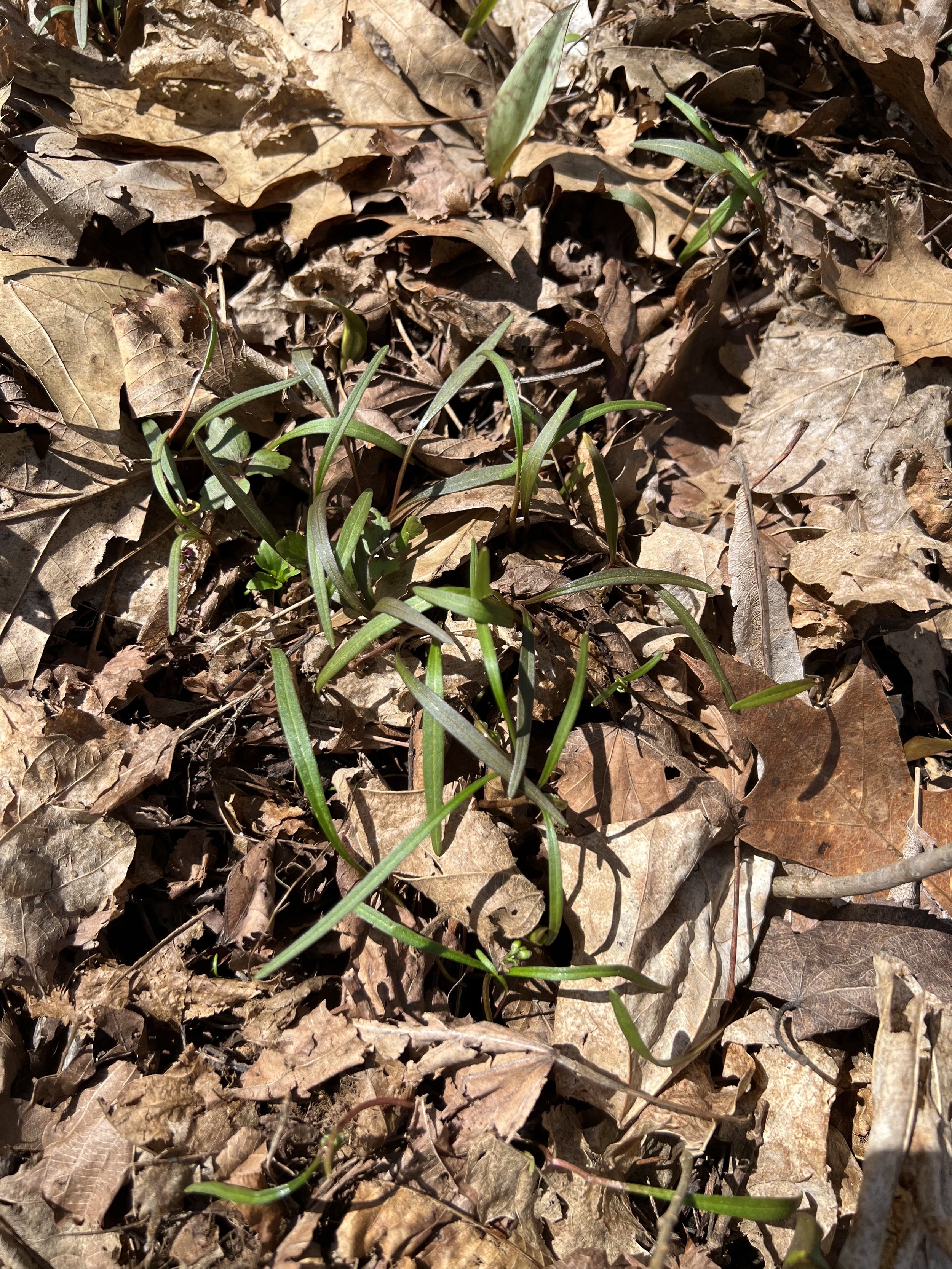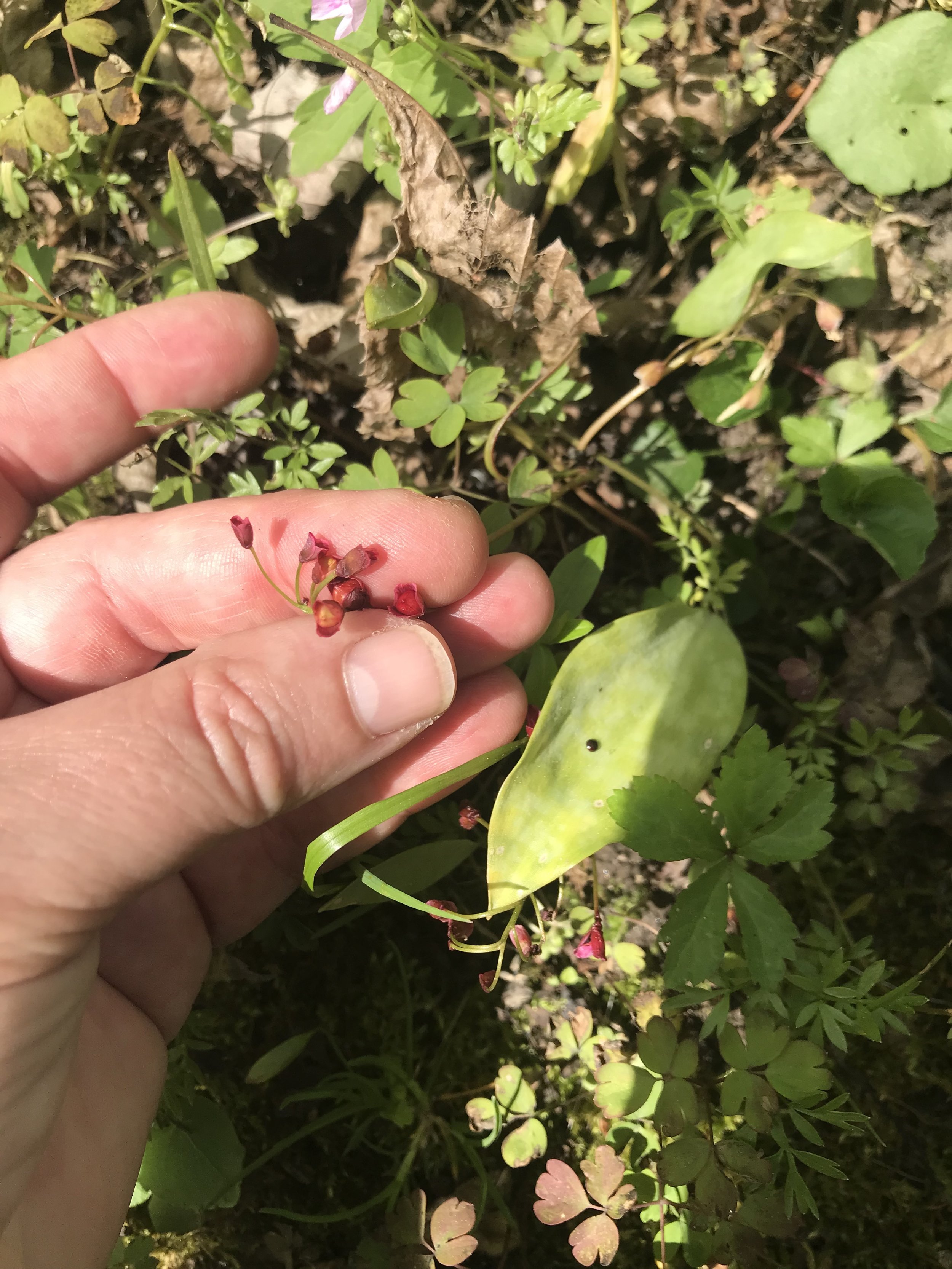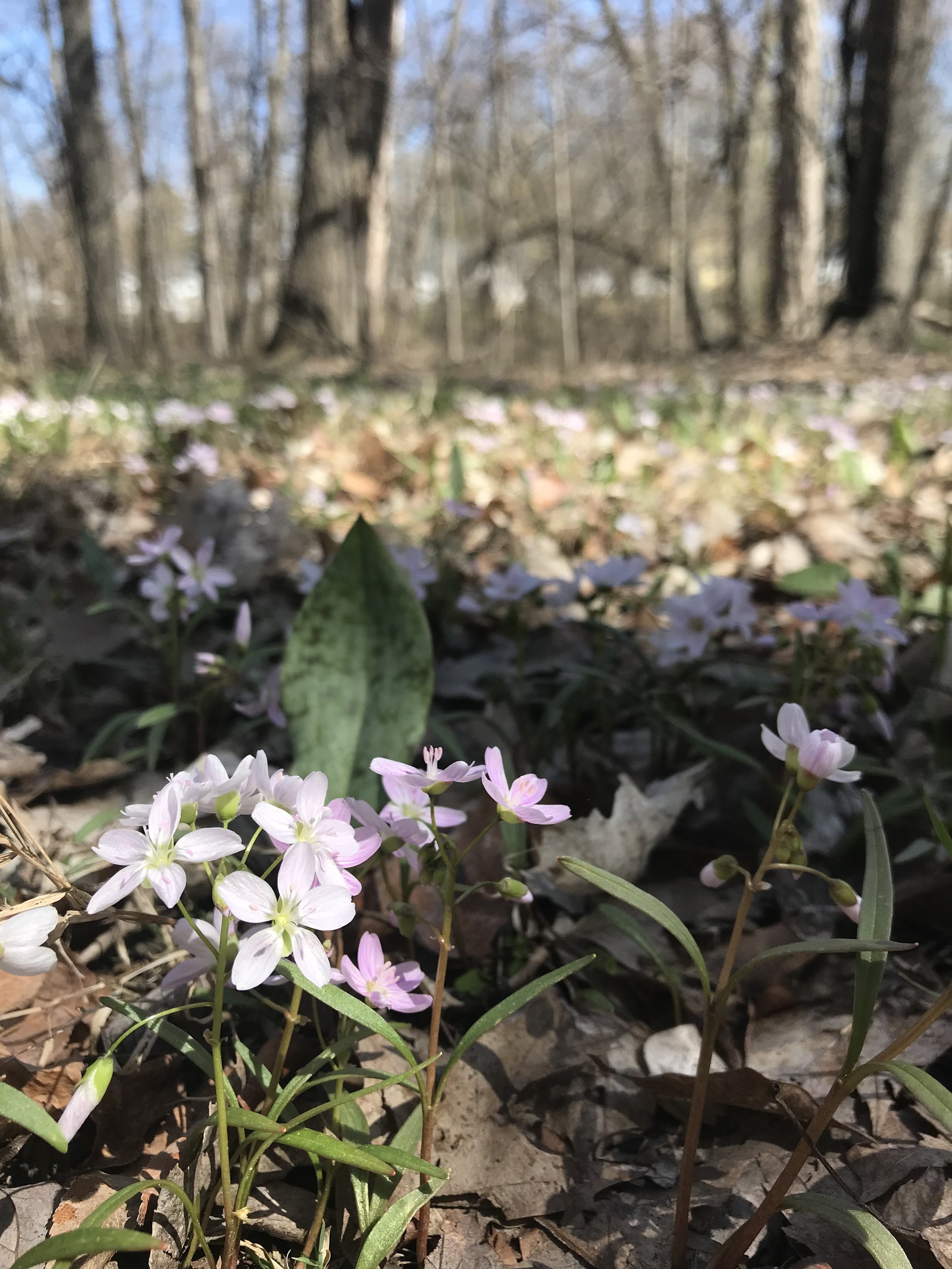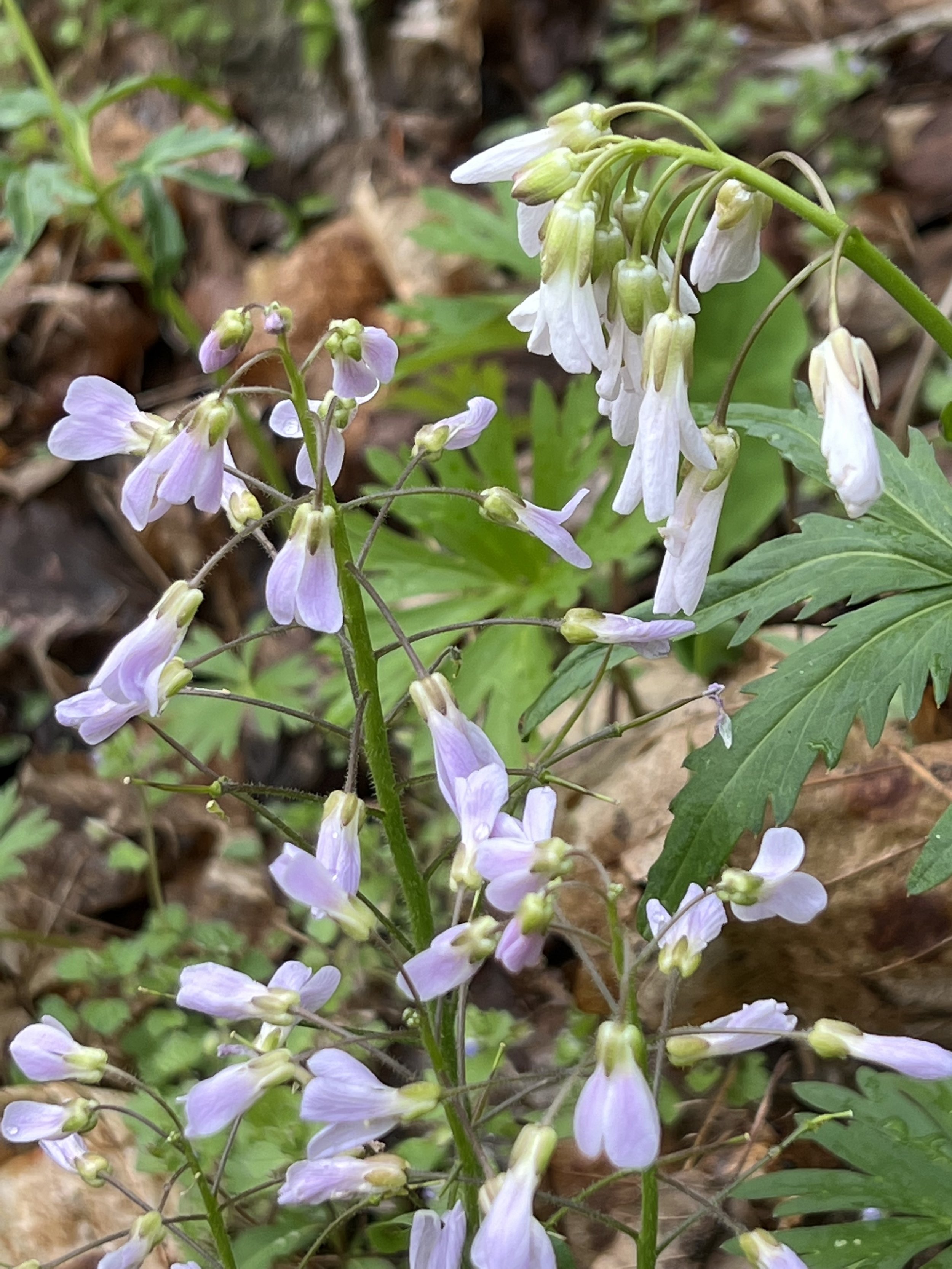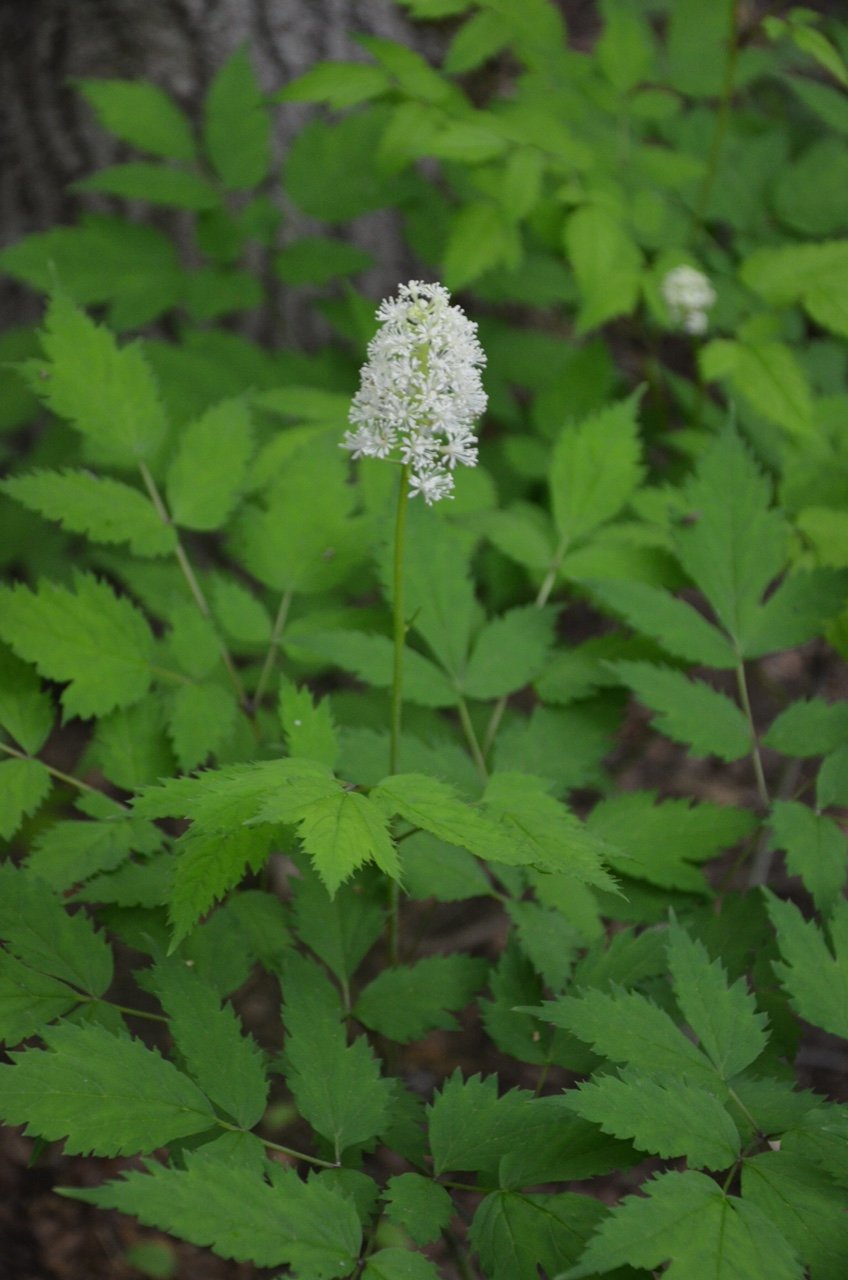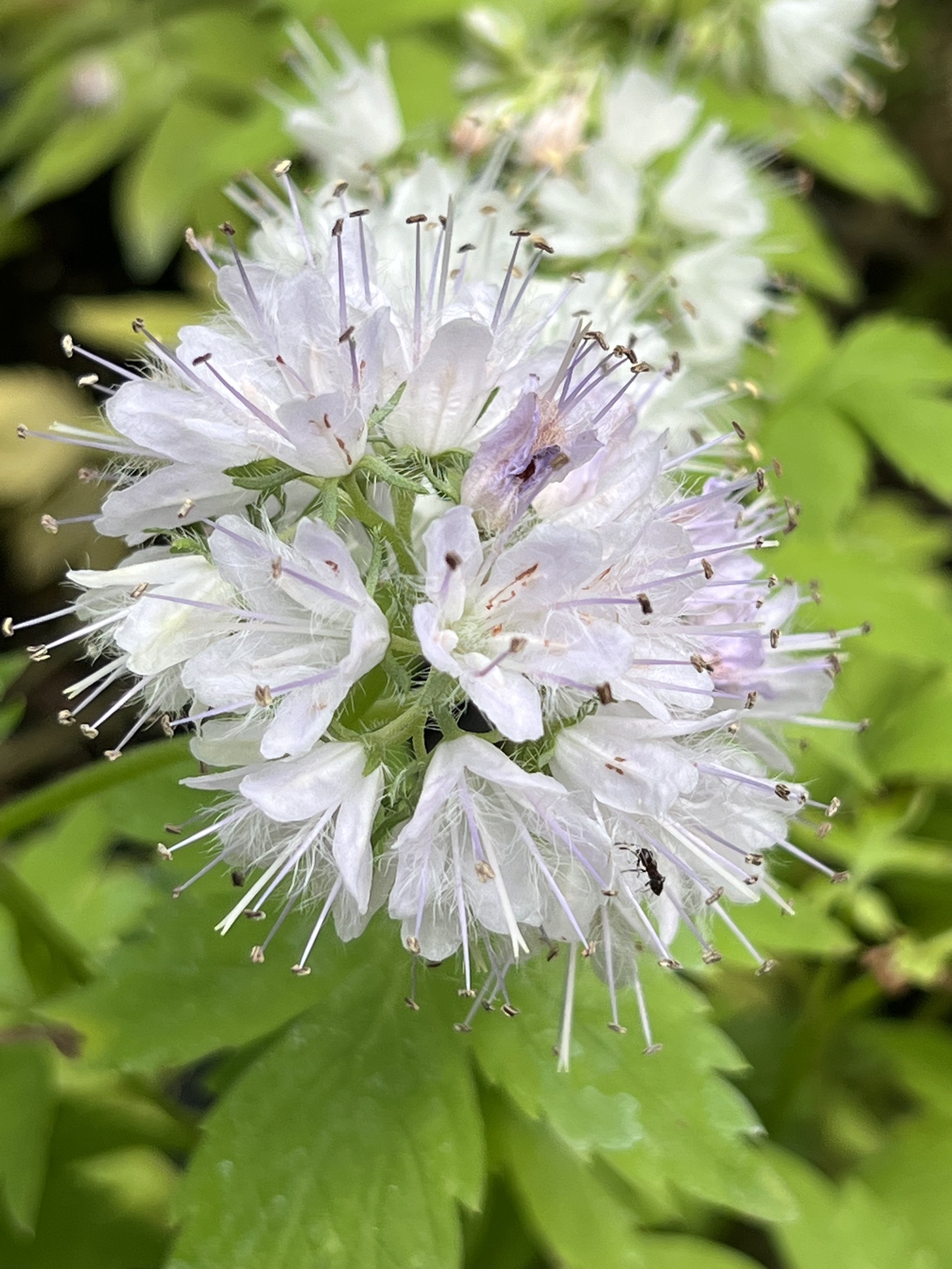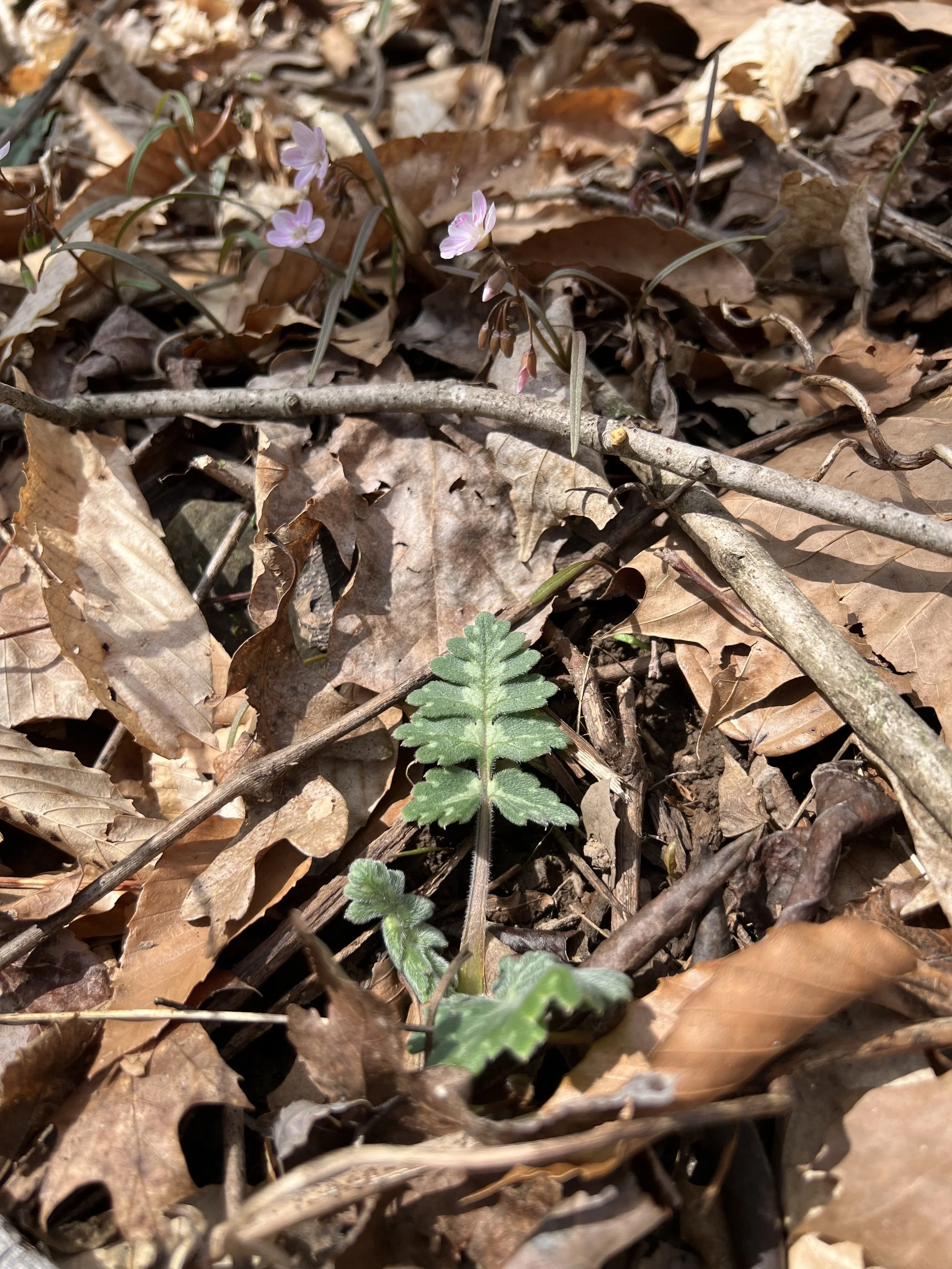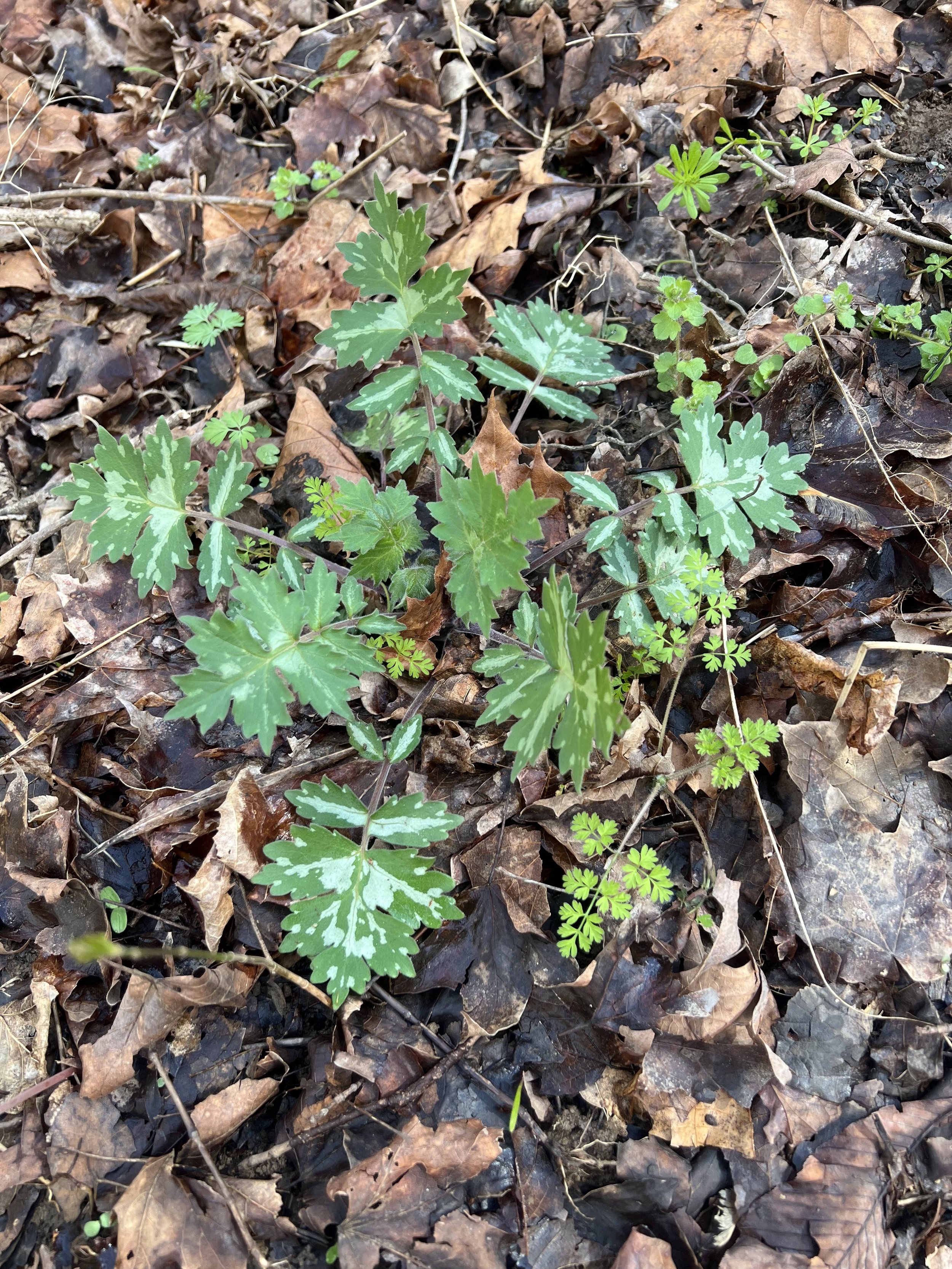Shooting Star (Primula meadia)
Shooting Star (Midland Shooting Star) is a plant of open prairies and savannahs. In Michigan, this plant is only known from two counties, one in the lower peninsula and one in the upper peninsula. It is categorized as an endangered plant in Michigan. Some sources you may read could still be using the previous genus categorization: Dodecatheon.
In the spring the pale green, rounded leaves emerge looking like a small head of lettuce. Flower stalks shoot up and an umbel of white to purplish flowers open. The flower stems look much like nodding wild onion, drooping over with the flower hanging down. The yellow anthers form the point of the shooting star with the petals reflexed upward. The flowers can vary from white to purplish and resemble the flowers of the cranberry plant.
Queen bumblebees visit these early blooming plants and use buzz pollination to access the pollen. There is no nectar. Once the pollen is available, other bees may also collect it as a food source.
Leaves of this plant will die back by mid-summer leaving the flower stalks with seed pods atop them. Small seeds are within the capsules.
Because the plant dies back by mid-summer, this plant can tolerate a bit drier, even rocky soil, as long as it is wet in the spring and has organic material. In praries, it grows well on slopes which apparently reduces competition with taller plants, according to Illinois Wildflowers.
(Midland) Shooting Star (Primula meadia)
Michigan Flora reference page for state distribution: Shooting Star
height: 12 inches
bloom time: April-June
soil: medium, rich, can include rocks
sun: full, partial
plant spacing: 8”
flower: white-purple
life cycle: perennial
family: Primulaceae
Michigan conservation status: endangered
Shooting Star (Midland Shooting Star) is a plant of open prairies and savannahs. In Michigan, this plant is only known from two counties, one in the lower peninsula and one in the upper peninsula. It is categorized as an endangered plant in Michigan. Some sources you may read could still be using the previous genus categorization: Dodecatheon.
In the spring the pale green, rounded leaves emerge looking like a small head of lettuce. Flower stalks shoot up and an umbel of white to purplish flowers open. The flower stems look much like nodding wild onion, drooping over with the flower hanging down. The yellow anthers form the point of the shooting star with the petals reflexed upward. The flowers can vary from white to purplish and resemble the flowers of the cranberry plant.
Queen bumblebees visit these early blooming plants and use buzz pollination to access the pollen. There is no nectar. Once the pollen is available, other bees may also collect it as a food source.
Leaves of this plant will die back by mid-summer leaving the flower stalks with seed pods atop them. Small seeds are within the capsules.
Because the plant dies back by mid-summer, this plant can tolerate a bit drier, even rocky soil, as long as it is wet in the spring and has organic material. In praries, it grows well on slopes which apparently reduces competition with taller plants, according to Illinois Wildflowers.
(Midland) Shooting Star (Primula meadia)
Michigan Flora reference page for state distribution: Shooting Star
height: 12 inches
bloom time: April-June
soil: medium, rich, can include rocks
sun: full, partial
plant spacing: 8”
flower: white-purple
life cycle: perennial
family: Primulaceae
Michigan conservation status: endangered
Shooting Star (Midland Shooting Star) is a plant of open prairies and savannahs. In Michigan, this plant is only known from two counties, one in the lower peninsula and one in the upper peninsula. It is categorized as an endangered plant in Michigan. Some sources you may read could still be using the previous genus categorization: Dodecatheon.
In the spring the pale green, rounded leaves emerge looking like a small head of lettuce. Flower stalks shoot up and an umbel of white to purplish flowers open. The flower stems look much like nodding wild onion, drooping over with the flower hanging down. The yellow anthers form the point of the shooting star with the petals reflexed upward. The flowers can vary from white to purplish and resemble the flowers of the cranberry plant.
Queen bumblebees visit these early blooming plants and use buzz pollination to access the pollen. There is no nectar. Once the pollen is available, other bees may also collect it as a food source.
Leaves of this plant will die back by mid-summer leaving the flower stalks with seed pods atop them. Small seeds are within the capsules.
Because the plant dies back by mid-summer, this plant can tolerate a bit drier, even rocky soil, as long as it is wet in the spring and has organic material. In praries, it grows well on slopes which apparently reduces competition with taller plants, according to Illinois Wildflowers.
(Midland) Shooting Star (Primula meadia)
Michigan Flora reference page for state distribution: Shooting Star
height: 12 inches
bloom time: April-June
soil: medium, rich, can include rocks
sun: full, partial
plant spacing: 8”
flower: white-purple
life cycle: perennial
family: Primulaceae
Michigan conservation status: endangered

